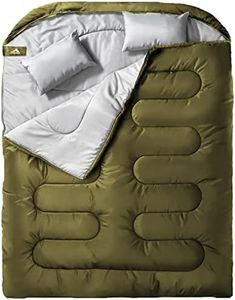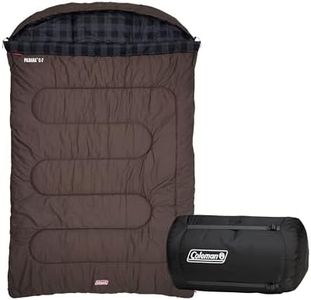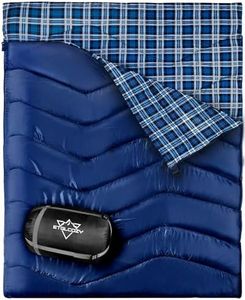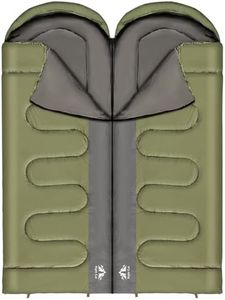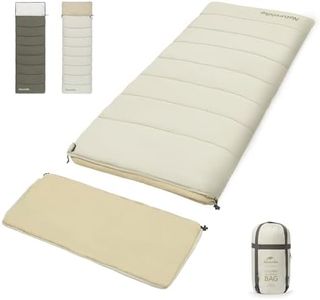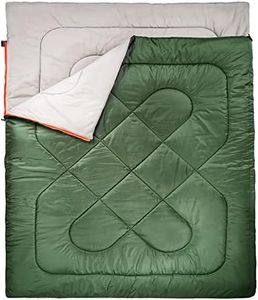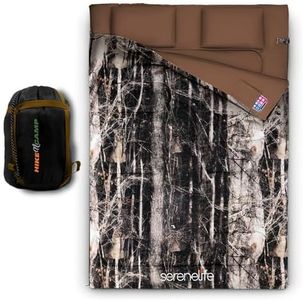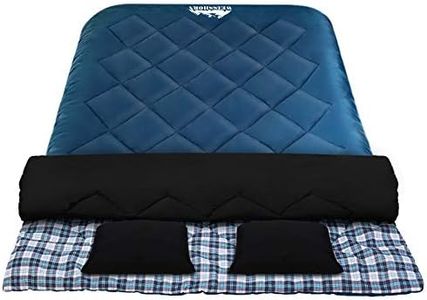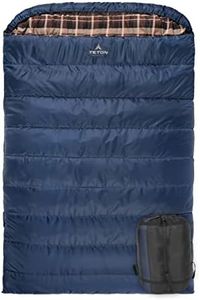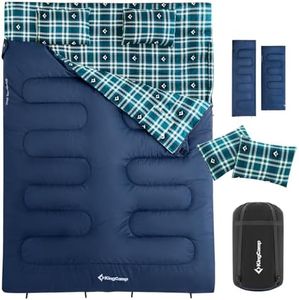We Use CookiesWe use cookies to enhance the security, performance,
functionality and for analytical and promotional activities. By continuing to browse this site you
are agreeing to our privacy policy
10 Best Double Sleeping Bags
From leading brands and best sellers available on the web.Buying Guide for the Best Double Sleeping Bags
Choosing a double sleeping bag is a great way to enhance comfort while camping with a partner or sharing warmth during outdoor adventures. The right sleeping bag will keep you both cozy, ensure easy movement, and match your camping style. To find the perfect fit, you should focus on a few key aspects such as temperature rating, size, insulation type, shape, weight, packability, and special features. Understanding how these features relate to your needs is the best way to make a confident decision.Temperature RatingTemperature rating describes the lowest temperature at which the sleeping bag will keep most users comfortable. It is crucial for ensuring you won’t get too cold (or hot) during nights outdoors. Ratings often fall into categories for summer, three-season, or winter use. If you camp in warm climates, a summer-rated bag with higher temperatures is suitable. For cooler nights or mountain trips, a three-season or winter-rated bag is better. Choose a temperature rating a bit lower than the lowest temperature you expect to face to stay comfortable and safe.
Size/DimensionsThe size and dimensions determine how much space you and your partner will have inside the sleeping bag. This includes both the overall width and length. Roomier bags are great for couples who like to spread out, while snugger fits offer better heat retention. Look for the length that accommodates the tallest sleeper and enough width for both to lie comfortably. Test out dimensions at home by measuring space, or look for models labeled ‘XL’ or ‘long’ if you need extra room.
Insulation TypeInsulation is the material inside the bag that keeps you warm. There are two primary options: synthetic and down. Synthetic insulation works well if you expect wet or damp conditions since it dries quickly and retains warmth when wet. Down insulation is lighter and packs smaller, offering better warmth for its weight, but it loses insulating power when soaked. Select insulation type based on your typical camping weather and how important weight and compressibility are for you.
Sleeping Bag ShapeDouble sleeping bags usually come in rectangular or semi-rectangular shapes. Rectangular bags give more room to move and are best for car camping or those who prioritize space. Semi-rectangular bags balance comfort and warmth, tapering slightly to trap heat better. A bag’s shape influences both comfort and how efficiently it retains heat. Choose wider shapes for maximum comfort if you don’t mind a bit of extra bulk, or semi-rectangular for more warmth on chilly nights.
Weight and PackabilityWeight and packability determine how easy it is to carry the sleeping bag, especially if you’re backpacking. Lighter, more compact bags are ideal for hiking trips where you need to carry all your gear. Heavier, bulkier bags are fine for car camping when you don’t have to carry your sleeping bag far. Think about how you’ll be traveling: choose light and compressible for backpacking, and don’t worry as much for drive-in camping.
Additional FeaturesAdditional features such as two-way zippers, separate foot sections, built-in pillows, or the ability to split into two single bags may add to the convenience and versatility of your sleeping bag. Features like these can be very handy depending on your typical use. For couples who get too warm, independent zippers allow ventilation; split designs add flexibility for solo trips. Reflect on your preferences for comfort and flexibility when weighing which extras matter to you.
